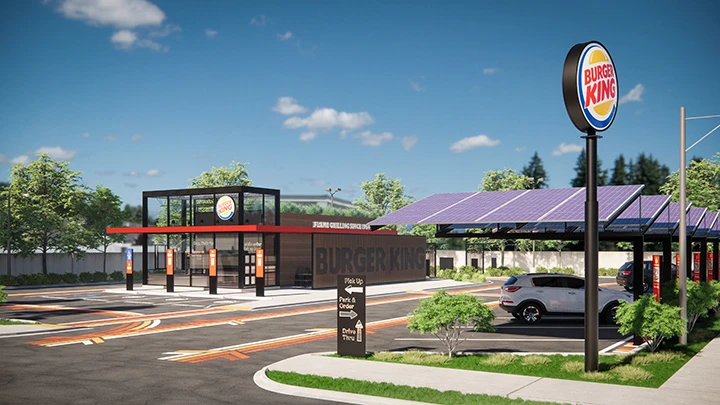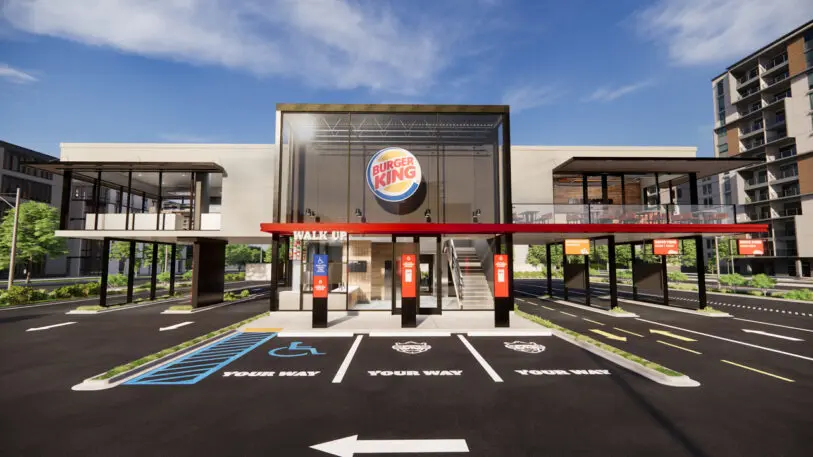Ask any fast food company, from Taco Bell to McDonald’s, and they will tell you: COVID-19 accelerated everything. While these restaurants knew that drive-throughs and delivery services had been growing, and that digital apps were essential to their future business, shuttered dining rooms catapulted us into that future of fast food overnight.
Nowhere is that more evident than in a series of new stores Burger King plans to start building next year—where the car is treated like royalty.

[Image: courtesy Burger King]The second is a T-shaped, two-story restaurant. The bottom features a counter to order and plenty of lanes for cars. The top story features the kitchen and a dining room. Why have this top-heavy second story? It allows the store to have a smaller footprint than the one-story Burger Kings of today. Steel framing and concrete lift the dining room into the air, which creates more space for cars to hit the drive-through. And today, at least 65% of a fast food restaurant’s revenue is made in the drive-through.

In other words, chain restaurants are investing in the higher-margin, higher-demand drive-through instead of dining rooms. (And Burger King is anything but alone in this regard—as we detailed in a recent feature, this trend is happening across the industry.) Other features, such as curbside pickup, only complement the drive-through, because they lure some cars out of the drive-through line. The longer a line of cars gets, the less likely a customer is to pull in.
Additionally, Burger King will be introducing other ways to get your food, such as a series of lockers protected with an ever-changing code. You can place your order in the app, park, grab your food, and drive off—all without ever coming face-to-face with a cashier.
[Image: courtesy Burger King]
“What we’re trying to accomplish here is to provide options,” says Rapha Abreu, vice president and global head of design at Restaurant Brands International. “What we tried to explore was . . . different service modes that can adapt to each person’s needs.”
Along those lines, the two designs here aren’t necessarily the only two Burger King layouts you’ll see in the future. Instead, their ideas will be swapped in and out modularly. It’s possible that a two-story Burger King could exist without a dining room, for instance, or that the smallest-footprint store wouldn’t have a drive-up in dense urban markets. For starters, Burger King will be opening pilot stores in Miami, Latin America, and the Caribbean to further test their ideas and confirm build costs before scaling.
As for when your local Burger King will get a makeover, the chain currently has 7,000 stores around the country. It builds a few hundred a year and retrofits a few hundred a year (nearly all Burger Kings are franchised, with individual owners footing the bill for cyclical upgrades). So while this new design is right around the corner, it could be several years before the Burger King on your corner actually looks different.
Recognize your brand’s excellence by applying to this year’s Brands That Matter Awards before the early-rate deadline, May 3.